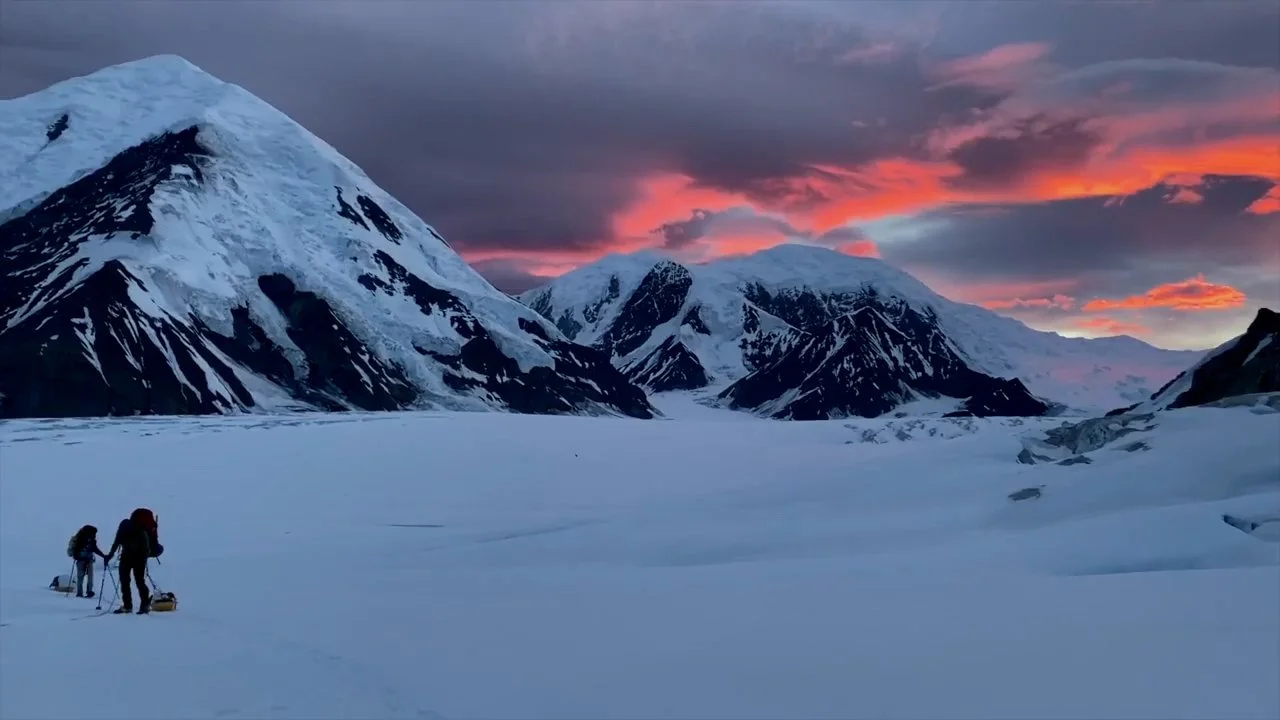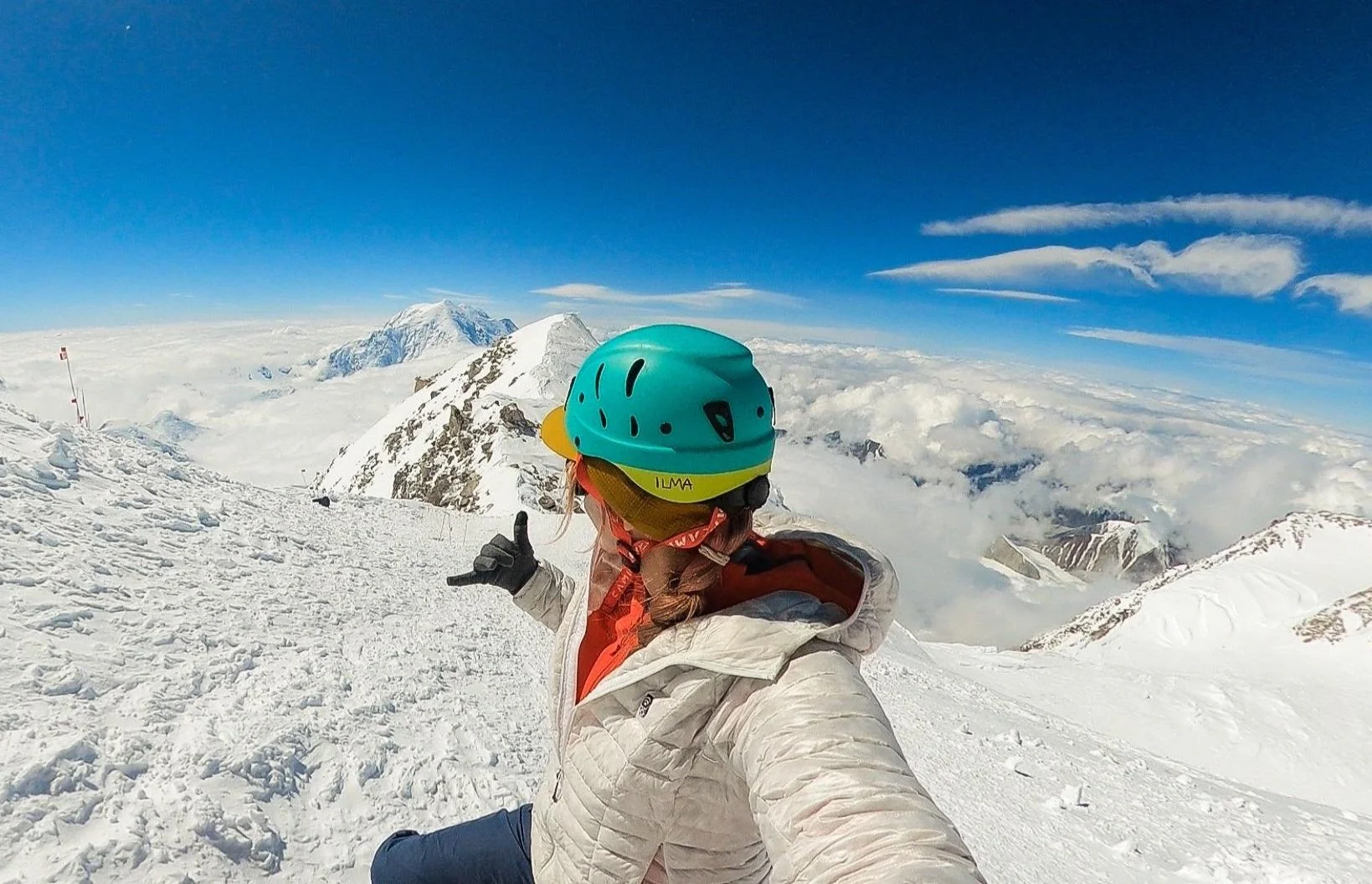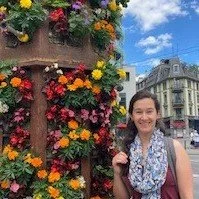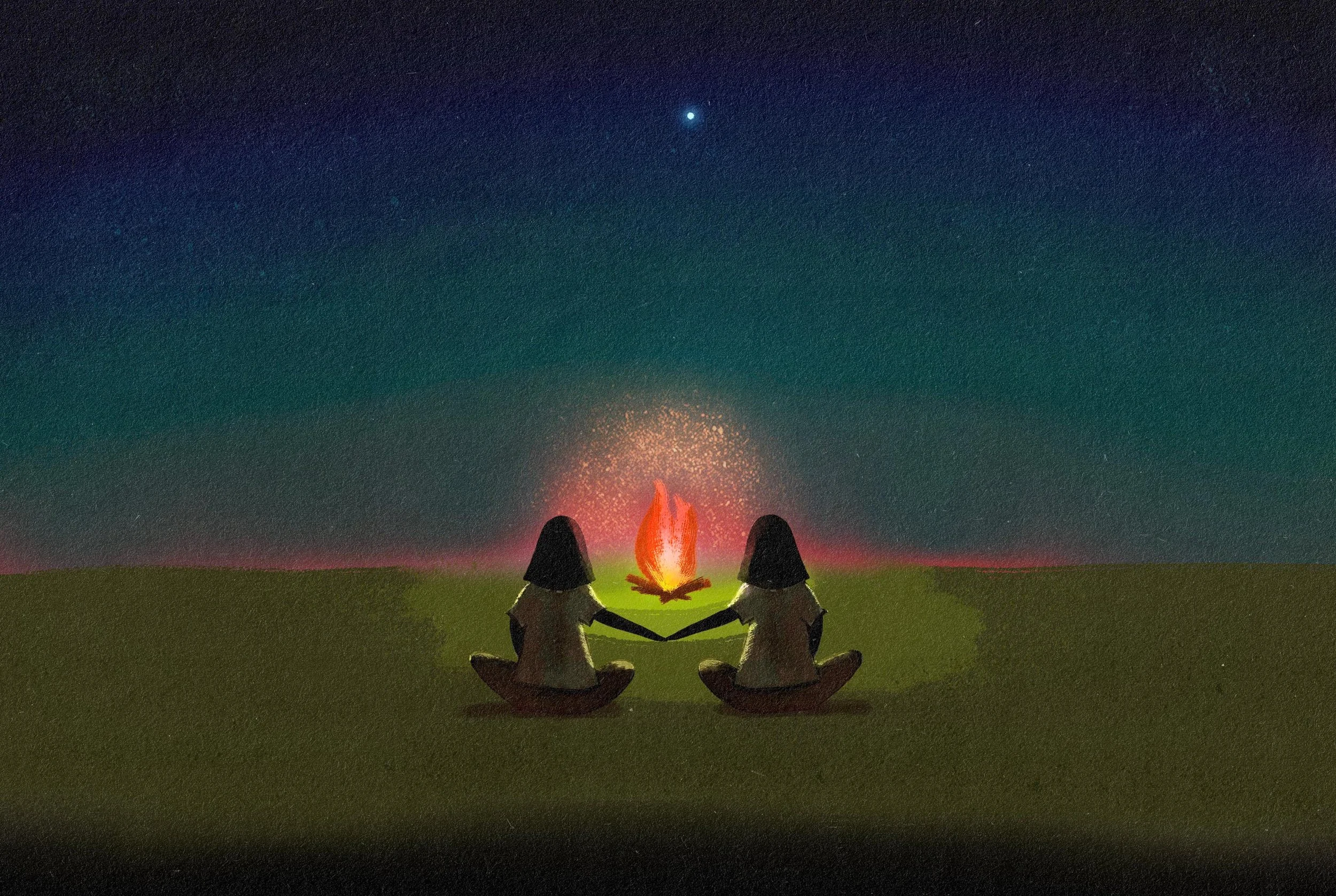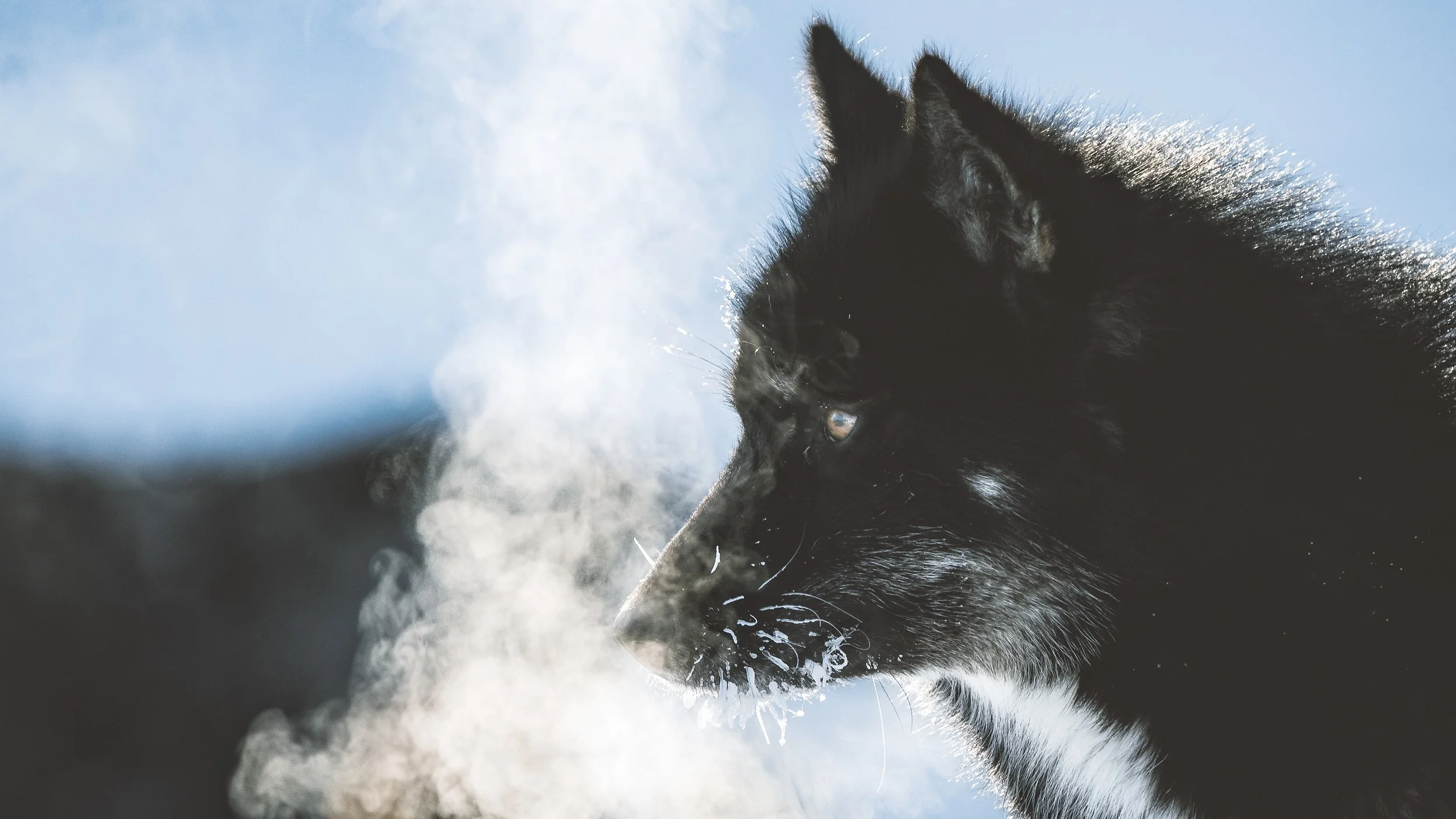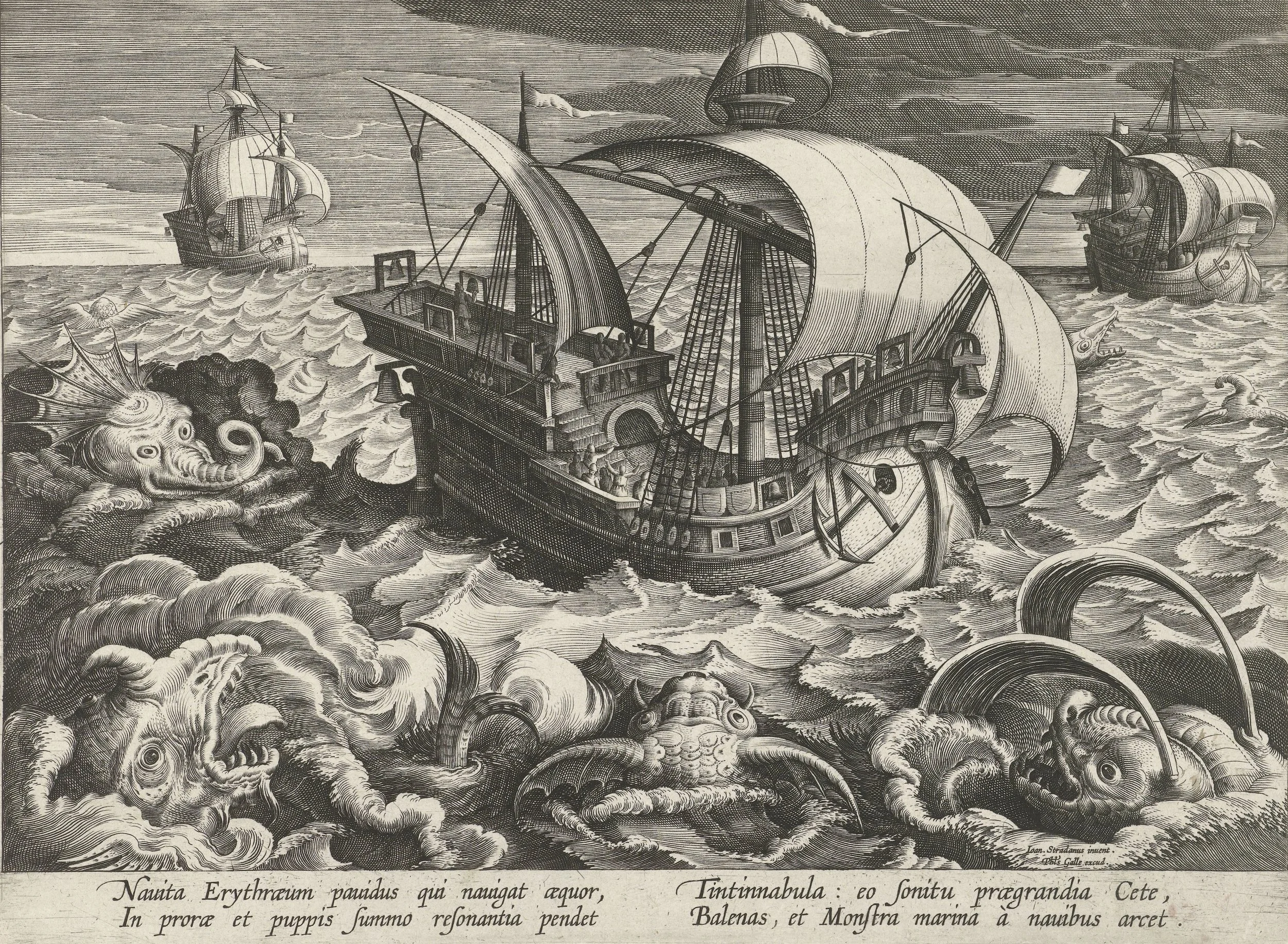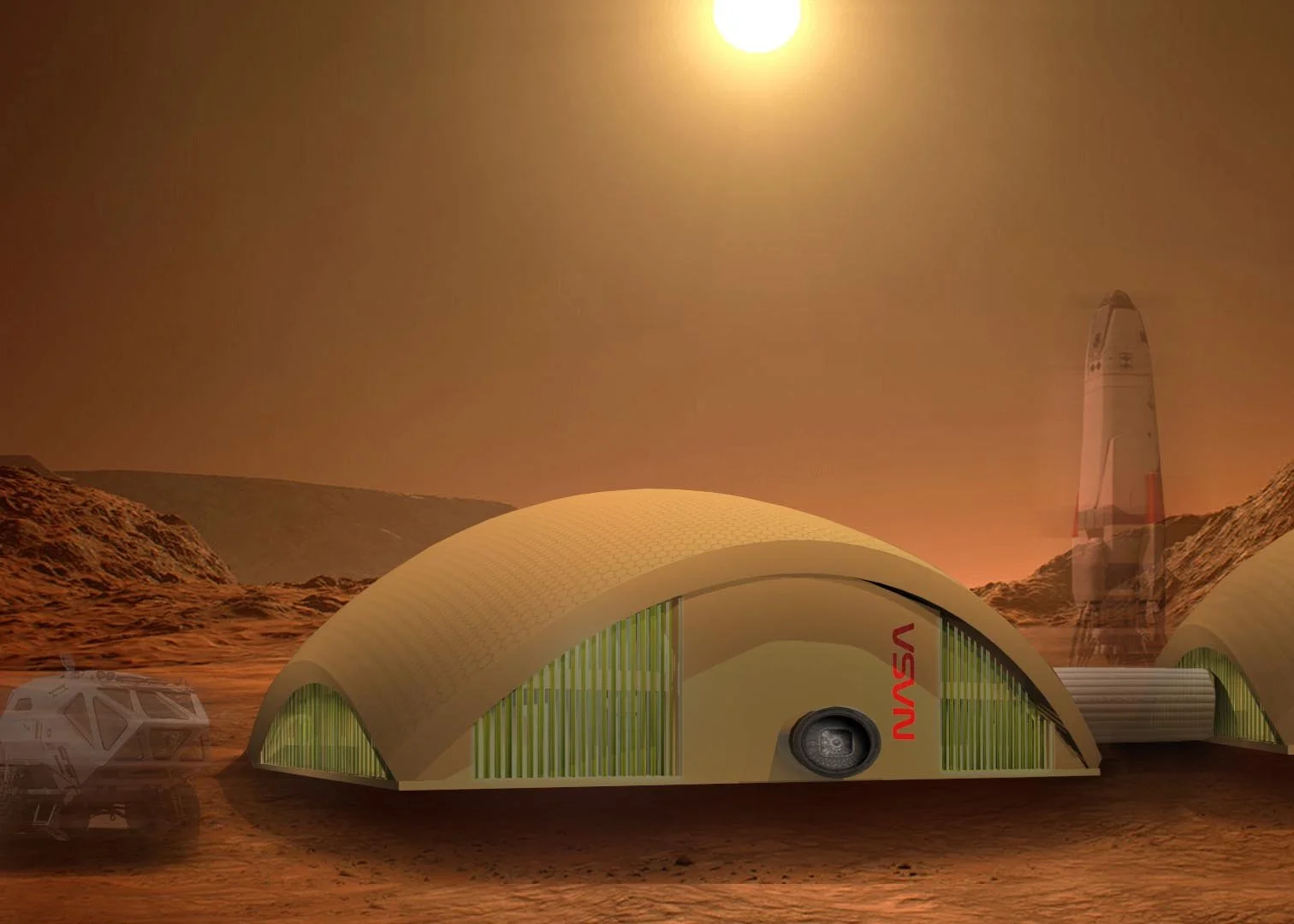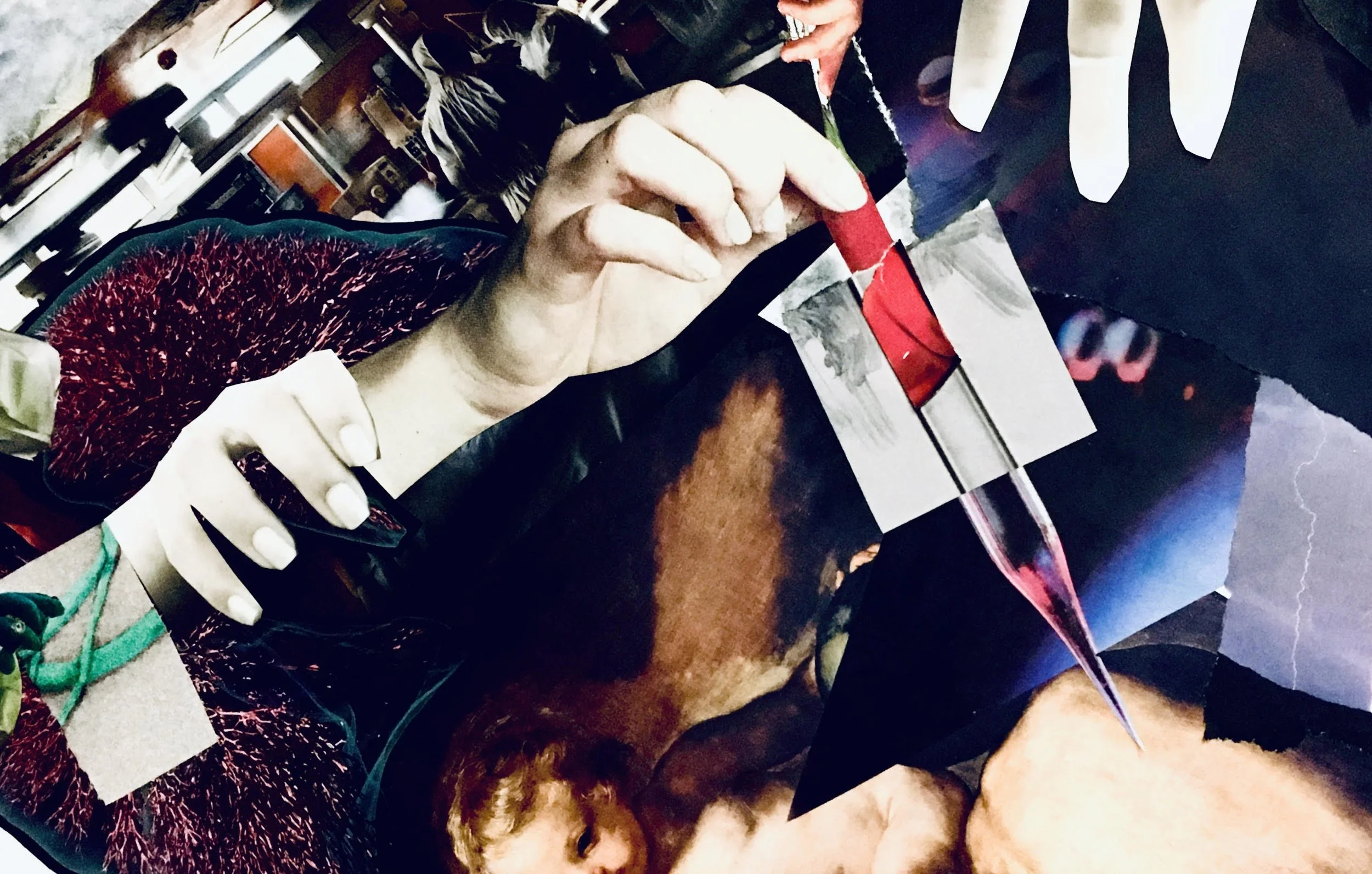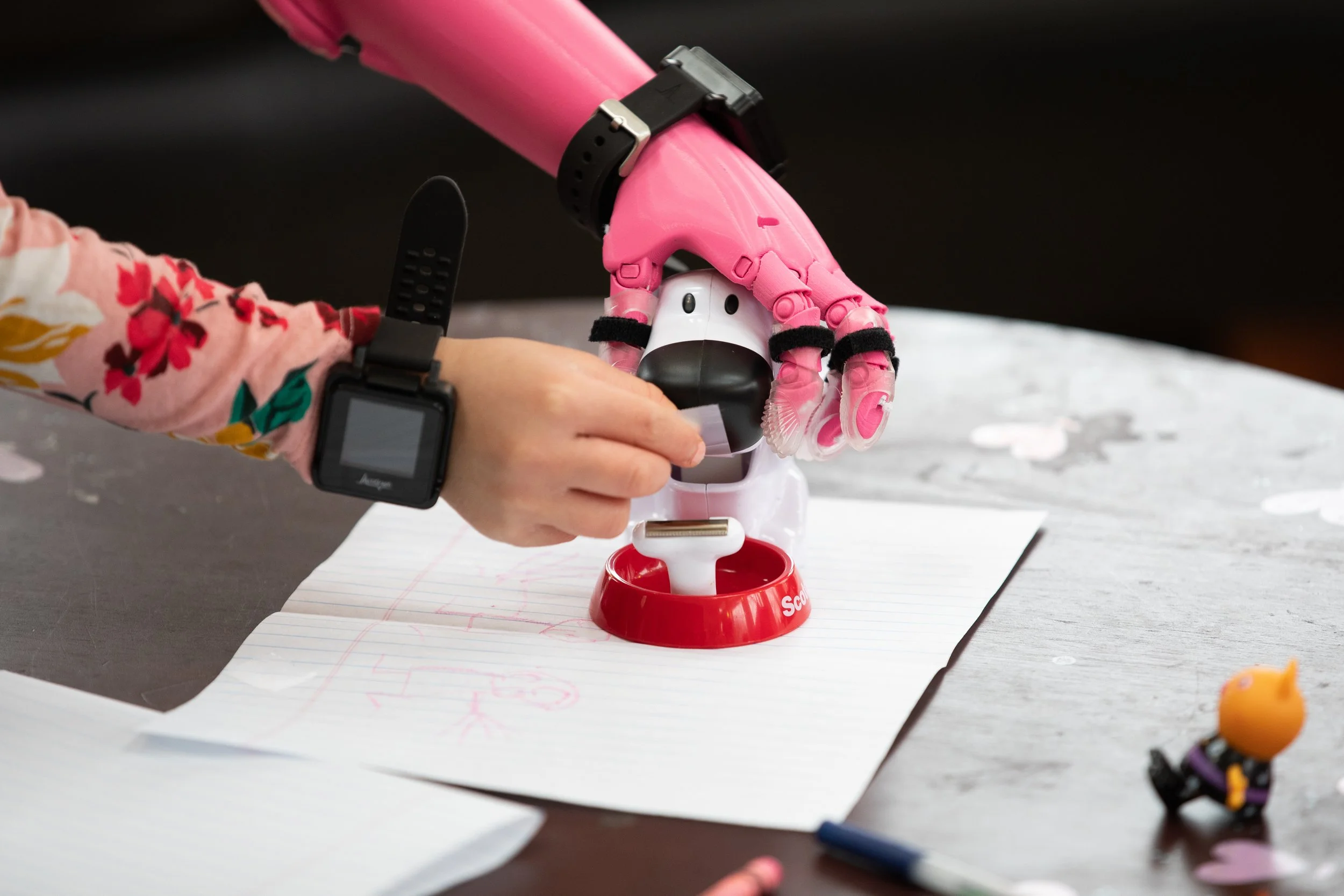From Combat Boots to Crampons
How adventurer Ilma Vallée climbed steep and societal mountains
Image credit: Ilma Vallée
by Annabelle Rosa-Elizabeth Moore
January 18, 2022
It’s the summer of 2021 in Alaska. Ilma Vallée’s metal crampons gnash into the icy side of the mountain like a knife stabbing frozen Styrofoam. The wind whips snow around her climbing team, turning the world white. Vallée can’t feel her fingers and toes. After thirteen days, they reach 19,700 ft., and dangerous winds hit the ridge. The storm forces them down, 610 ft. short of Denali’s 20,310-ft. summit—the highest in North America.
“Ilma had her boots on before we even rolled out of bed,” says Vallée’s tent-mate the next morning. She laughs at Vallée, documenting their expedition with her GoPro. Bed is generous for the negative-20-degree sleeping bag layered atop an inflatable pad on the side of a mountain. Vallée grins at her camera, face slathered with chalky sunscreen. Waiting to climb, the pair sit with thermoses of coffee sheltered by their yellow-gray nylon tent. This and a snow wall protect them from hurricane-force winds. Denali’s high camp sits at 17,200 ft. in elevation (nearly the height of 14 Empire State buildings), where temperatures dip to negative 30 degrees Fahrenheit.
Unpredictable weather on Denali quickly introduces climbers to life’s challenges at altitude. Think frostbite, frozen toilet paper, hand wipes, granola bars, and using the restroom in a portable bucket in a snow cave. The elevation brings danger from lack of oxygen and exertion that can trigger severe medical emergencies.
Vallée is pumped for a second summit attempt. “I was so anxious last night,” says Vallée. She’s bundled in a kaleidoscope of colorful puffer jackets, the opposite of her usual green flight suit. “What a tease to be only 600 ft. from the summit.”
Vallée has the fortitude to tackle any mountain, figurative or literal. She took a month off work as a US Air Force pilot to climb Denali. Not discouraged, Vallée laughs and says, “I wore my lucky underwear, and I’m feeling good!”
View the Interactive Companion Piece:
The Climb Up Denali
I watched Vallée’s Denali Fever documentary this August, but met her years ago through my husband. They met at the United States Air Force Academy nestled in the Rocky Mountains, where they tackled her first 14,000-ft. mountain. Vallée’s perseverance and adaptability to not just learn new worlds (military, outdoors, mountaineering), but to excel within them, inspired me.
Vallée was no stranger to demanding work in extreme conditions. Without a map to guide her, Vallée built her career in the Air Force from an enlisted cook to an officer and pilot. Born in Lithuania, Vallée was 11 when she immigrated to the United States.
Enlisting at 17, her first post was to cook grub at a midnight chow hall in California. Vallée’s commander nominated her for the opportunity to become an officer with an undergraduate degree from the Air Force Academy. Upon graduation, Vallée had to ace multiple mental and physical tests to apply for a pilot slot. Next, she had to pass the challenging year-and-a-half-long pilot training program.
Air Force demographics show only 7% of Air Force pilots are women. According to the US National Park Service, women comprise 10% of annual climbers on Denali. In 2021, of the 1,018 total Denali climbers, only 535 reached the summit. There are no guarantees in military life or mountaineering.
Vallée didn’t grow up outdoorsy, but she dedicated her time to learning every skill needed to approach mountains safely. Nature became Vallée’s sanctuary, her church—a space to work out the stresses of navigating two alpha-male-dominated cultures.
Vallée spent five years saving money, planning, and physically preparing. Denali is a multi-week trek across glaciers, crevasses, and rocky outcrops, with rest days in an arctic environment. The sun never fully sets. Climbers need to constantly protect their eyes and skin from snow blindness and sunburn. They must mind practical matters like keeping sunscreen and nighttime urine bottles from freezing. Denali enforces a Leave No Trace policy, so climbers carry everything, gear and trash.
To gain the grit to brave Denali, Vallée took mountaineering courses and climbed peaks in Europe and South America. She did CrossFit and a half-Ironman triathlon to build the endurance and cardiovascular strength to carry a 50 lb. backpack and drag a 20 lb. sled up Denali. Vallée’s life followed her favorite slogan, “Don’t. Ration. Passion.” She didn’t. Vallée got engaged at 14,259 ft. (on Colorado’s Longs Peak), married at the finish line of a marathon, and honeymooned on a mountaineering trip to Ecuador. For Vallée, every day was a training day.
From Talkeetna, Alaska, Vallée’s team flies to Denali’s base camp on Kahiltna Glacier (7,200-ft. elevation). They set up tents and take an acclimatization day, which doesn’t mean napping. The team practices skills to cross the glacier: self-arrest, rope team travel, crevasse rescues, and sled rigging, to find the most effective way to carry equipment and food up Denali.
Vallée and team enjoy the views after placing their supplies in a cache at 16,500 ft on the West Buttress Ridge. Image credit: Ilma Vallée
Climbers need skills to help them avoid illnesses like acute mountain sickness (AMS). AMS symptoms include headaches, fatigue, nausea, sleeplessness, and not feeling hungry even though one’s body needs the calories. While exposure to altitude could cause AMS, so could bullet climbing. To avoid AMS, climbers acclimate by stair stepping the climb with rest days to adjust to working and sleeping at altitude.
Recovery days are critical, as AMS could lead to high-altitude pulmonary edema (HAPE), or excessive lung fluid buildup, a condition that one in 50 climbers experiences on Denali. Exhausted climbers need to recognize HAPE symptoms (fatigue, a dry cough, and difficulty breathing). In 2021, HAPE symptoms caused the most calls to National Park Service rangers.
Above the 14,200-ft. camp, Vallée’s team successfully ascends icy fixed lines across the West Buttress, where the slope can incline 40 degrees or more. A fixed line is a set of ropes climbers use as a self-belay system with a piece of gear called an ascender.
On day 14, Vallée pursues a second chance to summit. Across the Autobahn (a flat section of the glacier that has claimed the most lives on Denali), high winds force her group down. The next morning, the team begins the knee-demolishing descent to base camp.
Vallée sat with her expectations and said, “That we didn’t summit was pretty tough.” It made Vallée question what she called success and face feelings of imposter syndrome. Was the effort worth it if they didn’t summit? She said it was about taking one breath, then one step.
“Throughout [the] Air Force Academy, I was like, ‘How am I going to be an officer?’” said Vallée. “‘How am I going to lead people?’ I couldn’t look people in the eyes, [I was] so shy.” Shifting from an Eastern-European culture that taught women to be meek, to an American culture, which celebrated independence, was challenging. She had learned not to brag about achievements. It pushed her to be a perfectionist, but it also kept her humble. Ilma said that imposter syndrome was “something that I struggled [with] as an officer, as a pilot finding my voice.”
In tough times, she stopped to remember what she achieved. Trusting in her training gave Vallée the confidence to continue. “When you spend so much time focusing on a goal, and 16 days on a mountain, it’s easy to get summit fever,” said Vallée. “Without the summit, it allowed me to internalize the experience and gave me a different perspective on life. It’s not about the summit, finish line, medal, or promotion; it’s about the journey, the hardships, the blisters; it’s about the climb.”
Annabelle Rosa-Elizabeth Moore
It was with dirt up to her elbows, digging for wild vegetables in Japan, that Annabelle Moore decided she wanted to be a writer. She is a graduate student in the Johns Hopkins University Science Writing Program. Her work has appeared in Undark and the National Association of Science Writers Student Newsroom.


